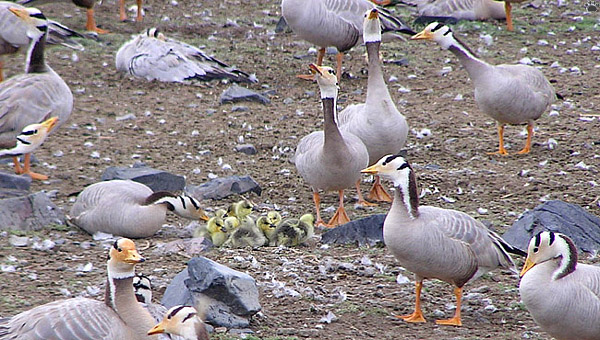
Bar-headed geese (Anser indicus), Lake Qinghai.
Part 10. Qinghai and Qinling
The northeastern part of Tibet, once known as Amdo, is now the Qinghai Province of China. It got its name from a huge lake, the largest in Tibet, which for a long time was known to the West under its Mongol name, Kukunor. Just ten years ago it was a remote place, inhabited by thousands of cranes, geese, ducks, cormorants, and rare Przhevalski's gazelles.
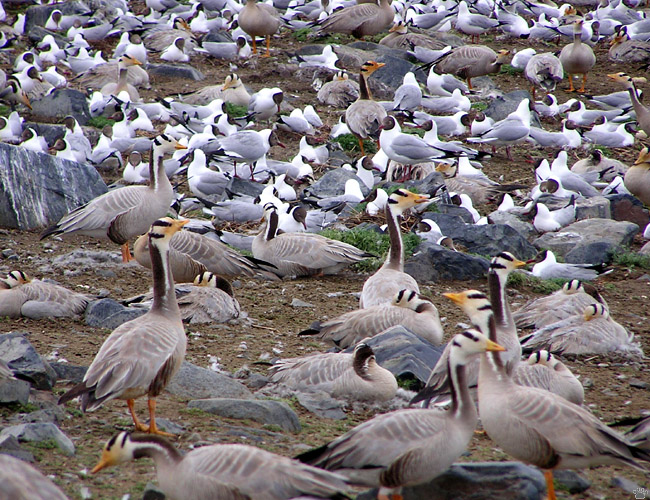
Bird Island, Lake Qinghai. |
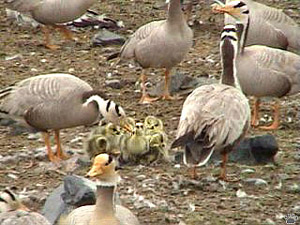
Bar-headed geese, Lake Qinghai. |
Recently, its shores have been converted to croplands; the gazelles are almost extinct; bird colonies survive only in one small area. |
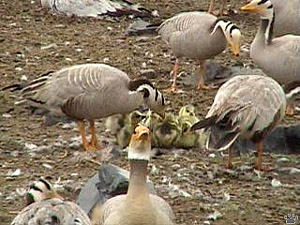
Bar-headed geese, Lake Qinghai. |
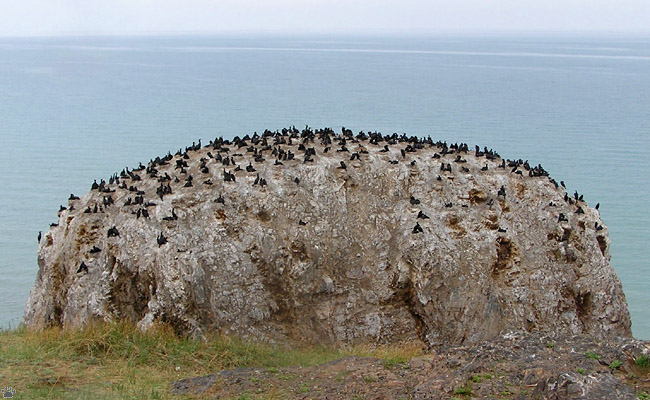
Greater cormorants (Phalacrocorax carbo), Lake Qinghai. |
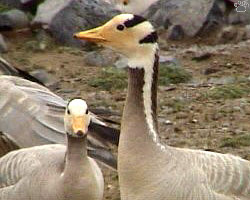
Bar-headed geese, Lake Qinghai. |
This area is still called Bird Island, although it became a peninsula due to dropping water levels (much of the water is taken for irrigation). It is easily accessible from Xinin, the provincial capital. There are a few large colonies of bar-headed geese, brown-headed gulls, and greater cormorants there. |
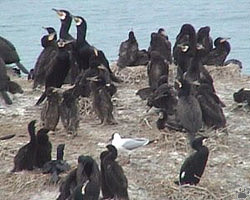
Greater cormorants, Lake Qinghai. |

Bar-headed geese, Lake Qinghai. |
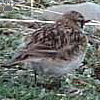 |
 |
The entire peninsula is now a Nature reserve, and the local government is doing its best to protect it. But, as with almost every other reserve in China, it's hard to say if this place will survive the growing pressure from runaway development just outside its borders. |
 |
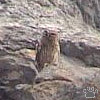 |
Tibetan larks (Melanocorypha maxima),
Lake Qinghai. |
Ruddy shelduck (Tadorna ferruginea) and
little owl (Athene noctua), Lake Qinghai. |
 |
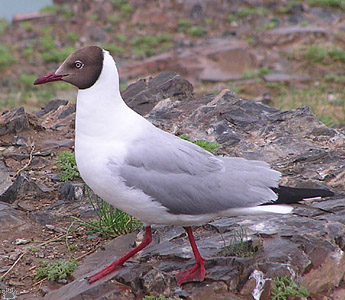 |
| Brown-headed gulls (Larus brunnicephalus), Lake Qinghai. |

Foping Nature Reserve, Qinling Mountains, Shaanxi. |
To the east from Lake Qinghai, the mountains of Tibet gradually come together into one last mountain range, called Qinling Shan. It is a very different world: lush forests, deep canyons, and wildlife very similar to "panda reserves" of Sichuan. |

Golden monkeys (Rhinopitecus roxellana), Foping NR, Shaanxi. |

Chinese beauty snake (Elaphe mandarina), Foping. |

Eyelashed pit viper (Trimeresurus schlegeli), Foping. |
If you travel from the northwest, these mountains are where you first see many typical Chinese species, as well as some tropical ones. |

Eyelashed pit viper, Foping. |

Chinese beauty snake (Elaphe mandarina), Foping. |

Crested ibises (Nipponia nippon), Foping. |
Pandas, takins, golden monkeys, Chinese desert cats, leopards, and many species of pheasants live in Qinling, but the most famous resident is crested ibis. Once common all over East Asia, it now survives only in one remote valley, with less than a hundred birds left in the wild. |
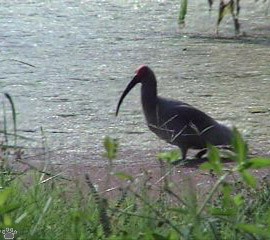
Crested ibis, Foping. |
 |
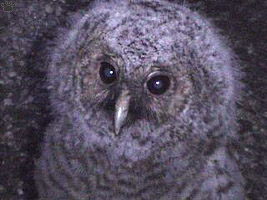 |
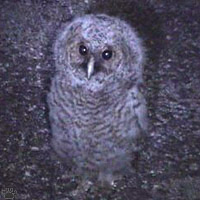 |
| Chinese tawny owls (Strix aluco ma), Foping. |
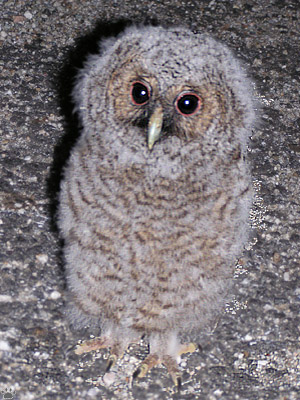
Chinese tawny owl, Foping. |
Forests of Central China are very interesting at night. This baby was sitting in the middle of an abandoned road over the mountains. It could fly a little, but was so tame that I could pet it. Owls often leave nest before their down is replaced by feathers. |
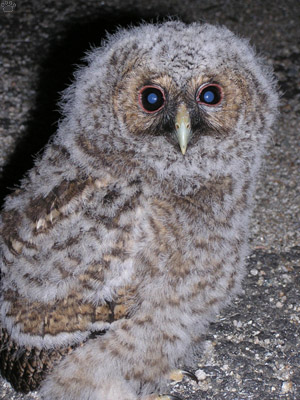
Chinese tawny owl, Foping. |
 |
 |
| Chinese tawny owl, Foping. |
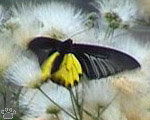
Chinese birdwing (Troides aeacus),
Foping. This is the only birdwing
butterfly occurring outside the
tropics. |
Golden pheasants are very common in Qinling Mountains. |
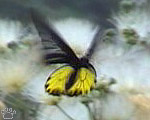
Chinese birdwing (Troides aeacus),
Foping. They are very rare in
Shaanxi, but relatively common in
Southern China.
|
 |
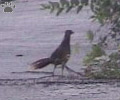 |
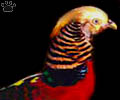 |
| Golden pheasants (Chrysolophus pictus), Foping. |
| North from Qinling, it's another very different world - again. |

Toad, Foping Nature Reserve, Shaanxi.
Part 11: The Northwest
Back to Part 9
Home
|